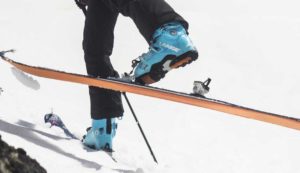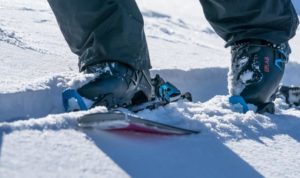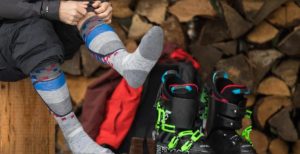Unless you are very rich or have a very good friend in the ski shop. you are going to have to sharpen your own skis. As this is the only maintenance I was going to talk about, I may as well go into it here as it does not really warrant a whole article of its own.
This is a bit like a cooking recipe. You will need a new file, as they wear out quite quickly. A ten-inch bastard mill is the best, but any standard milled file is adequate.
- You will need a carborundum block – that’s a sharpening stone. Make sure you have some oil to go with it although I have used spit quite successfully.
- You will need one of those decorator’s scrapers made of stainless steel. They are about six inches by three and have sharp edges. If they get blunt from use then you can sharpen them on the file.
- You will also need a rag to wipe any mess off the bottom of the skis.
All this stuff can be bought in a hardware store for about $10. This will probably save you about $100 you would have spent in the ski shop on the same bits. I hope you appreciate the money I am saving you.
If you haven’t got a vice readily available – do you mean to say you forgot to pack that huge lump of metal bolted to your workbench in the garage? In that case, you can quite easily do all this by hand.
First of all, get the ski stoppers out of the way with a looped piece of string over the top of each ski or any other way that keeps them held back. It is better to sharpen the edges before scraping the soles as you may get some of the filings sticking to the soles if you do it the other way around.
Take a ski and put it on its edge with the back end on the floor. You should stand astride it holding it up with your thighs – not that high. Hold the ski with whichever hand you’re not going to file the edge with.
The ski is roughly at 45 degrees to the floor. File the edge from the shovel end with the file as flat as possible but held at an angle of about 45 degrees across the edge. This maximizes the cutting of the file. As you work down the ski try to keep one motion going. You will have to walk down the ski as you go, and if you have to stop filing, hold the file at that spot, rearrange yourself, and carry on. You can either kneel down as you work towards the back end, or else drop the shovel onto the ground and put the heel up against the wall to finish off.
Sharpening all 4 edges
There are three more edges to do like this – if you are in a hurry you can just do the two inside edges of each ski as long as you remember to put them on right. Mark the skis left and right if you are doing this. If the file is doing its job you should land up with a load of metal filings along your filing fingers, and you should only need to run it along each edge a couple of times at the most. You will only need to do it more if there are really bad gouges in the metal. You may only have to run the file along once; I’ll let you be the judge.
You should now do the bottom. Put the ski upside down at 45 degrees against a wall with the tip on the wall and the heel on the floor. You can again steady the ski between your thighs. Get the file at its maximum cutting angle of 45 degrees across the sole and draw it back down the ski with quite a bit of pressure. Again you should feel some bits of metal on your fingers. Remember not to go over the same bits but stop the file if you want to rearrange things.
Oil the carborundum up and do the same on the edges and the sole that you have done with the file. This can be done quite lightly and is only intended to smooth off the burrs made by the file’s rougher treatment. Remember to keep it as flat as possible. You can now just blunt off the first six inches at the tips very lightly with the carborundum held at 45 degrees across the edges. This means that the skis won’t cut into the ice too quickly at the beginning of a turn. I’ve never noticed if this works but the purist theoretician in me says it does, so there we go.
Scraping the Sole
Scraping the sole comes next. Take the decorator’s scraper between the forefinger and thumb of both hands and draw it up the sole of the ski at about 45 degrees. Everything on this job seems to be done at 45 degrees so for a change let’s say 35 degrees. You will be using the long side of the scraper to do this of course. The scraper’s sharp edge should shave off small amounts of the plastic sole. If you bend the scraper up in the middle fractionally then you will get a minimal concave sole which can theoretically mean a faster edge set, but again I can’t say I’ve ever noticed the difference between doing it and not doing it. Scraping the sole is really only done to clear up the mess made by the file and to equalise the amount of edge taken off by the file.
Finally wipe the skis with that valuable rag to get off any loose bits of metal, oil, and plastic.
It goes without saying but I’ll say it anyway. If you want to avoid all this hassle leave your skis in the ski shop overnight and ask the technician to do it for you. It may cost a few bucks.













